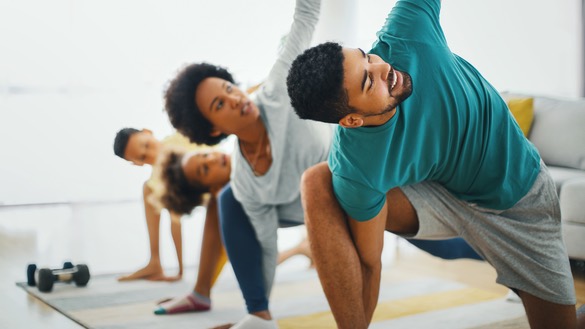Minds On
Ways to express yourself: organize your ideas
It is not always easy to construct expressive sentences, and even harder to put sentences together into well-structured paragraphs. However, there are lots of tools that writers can use to organize their ideas into paragraphs.
Explore the following video “How to Write a Paragraph” where Teacher Wynne explains how to organize your thoughts into a paragraph. She compares writing a paragraph to a hamburger and though this seems strange, her ideas end up getting organized so that the reader can fully understand her thoughts.
Teacher Wynne has used a hamburger to help her plan and visualize her paragraph. Why do you think it’s so important to have a way to organize your paragraphs? What would happen if we couldn’t organize our paragraphs? Can you think of another object that could help you organize your thoughts?
Action
Paragraph structure
Paragraphs provide structure and flow to your work. They allow you to move from one thought to another. When you start a new paragraph, you are telling your reader that the previous topic is over, and you are moving on. Without this structure, your ideas will be difficult to follow.
Teacher Wynne used the following ideas to help her organize her thoughts into a paragraph:
Main paragraph components
The topic sentence
Student Success
Think-Pair-Share
Identify the different parts of a paragraph using the hamburger idea. You may print out the paragraph and highlight the different parts using different coloured markers or share your ideas out loud. Where is the top bun, the middle, and the bottom bun?
Note to teachers: See your teacher guide for collaboration tools, ideas and suggestions.
Paragraph
Example:
There are several different types of renewable and non-renewable energy. The sun, wind, and ocean tides are forms of renewable energy that will last forever. Wood and coal are forms of non-renewable energy that humans can use to produce electricity. Non-renewable means that they will not last forever. World supplies of oil and natural gas, more non-renewable forms of energy, are also in limited supply. The different types of energy that are found on the Earth are not always renewable.
Paragraph details
Sometimes it can be difficult to decide what to put in the middle of your hamburger! Which supporting details should you choose?
Teachers Shahana and Erika explain what kinds of details make an informative paragraph. Explore the video “Paragraph with Supporting Details” as they extend the concept of the middle part of the hamburger and break it down into main ideas with supporting details. What kinds of supporting details do they recommend?
Student Success
Think-Pair-Share
If possible, work with a partner. Brainstorm and create a paragraph on why it’s important for schools to recycle. Organize your thoughts into Examples, Facts and Data, and Negative Effects, just like Teachers Shahana and Erika did. Last, think of a concluding sentence to wrap up your paragraph.
You may choose to use a graphic organizer like the one Teachers Shahana and Erika used to make a planner for your paragraph. Or you may choose to mind map your ideas or record your thoughts in an audio recording.
Complete the Paragraph Graphic Organizer in your notebook or use the following fillable and printable document to help you organize your ideas.
Once you have organized your ideas, try drafting a paragraph of your own. You may use paper, a computer, or an audio recorder to capture your thinking. Use linking words like “First,” “Second,” and “Lastly” to help your audience understand where they are in the paragraph.
Note to teachers: See your teacher guide for collaboration tools, ideas and suggestions.
Consolidation
Your turn!
Using Teacher Shahana’s and Erika’s paragraph structure, plan out a paragraph. You can use one of the following topics, or choose your own topic of interest:
- The Benefits of Exercise
- The Importance of Protective Gear When Playing Sports
- The Best Ways to Conserve Energy at Home


Start by organizing your topic sentence, supporting details (examples, facts and data, and negative effects), and concluding sentence. Did you include all the necessary information?
Once your plan is complete, you are ready to create your paragraph. Use linking words like “First,” “Second,” and “Lastly” to keep your ideas organized and flowing together, which helps your audience understand the important message you want to give.
Complete the Paragraph Organizer in your notebook or use the following fillable and printable document to help you organize your ideas.
Reflection
As you read through these descriptions, which sentence best describes how you are feeling about your understanding of this learning activity? Press the button that is beside this sentence.
I feel...
Now, record your ideas using a voice recorder, speech-to-text, or writing tool.
Press ‘Discover More’ to extend your skills.
Discover MoreUsing the supporting details you just organized, expand your writing so that each supporting detail (examples, facts and data, and negative effects) becomes its own paragraph. You will now have three linked paragraphs that begin with a topic sentence and end with a concluding sentence.
